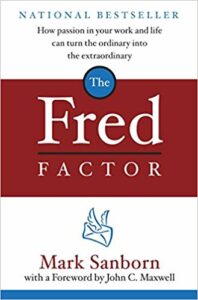Bringing Fred Into Business Blog Writing

The most important job skill of the twenty-first century, Mark Sanborn posits in The Fred Factor, is the ability to create value for customers without spending more money to do it. “Freds” are people who either create new value or add value to the work they already do, the author explains.
In creating blog content, needless to say, the goal is demonstrating that this product provider or practitioner has better ideas, better products, and better service than the competitors. But rising above the noise in a crowded field is much easier said than done. “Do you think you have an utterly unique product? Here’s the truth; you probably don’t,” digital consultant John Boitnott says bluntly. But human beings like to buy from other human beings, not faceless companies, so you need to be as human as possible, Boitnott says, focusing on authenticity, trust, and passion.
“Freds” pay attention to appearances, not because they are more important than substance, but because they count, Sanborn warns. We increase the value of things when we make them aesthetically pleasing. Potential consumers should have a positive experience from minute #1 of encountering your brand through your blog, and the posts need to help readers put themselves into the scene, envisioning the savings, the satisfaction, the pride, the increased health and improved appearance they’ll enjoy after using your product or service.
Just ten years ago in this Say it For You blog, I described the two aspects involved in winning medals in a horse show – equitation and pleasure. “Pleasure” refers to the horse itself – its posture, its control, and its looks, while “equitation” refers to the skill and the posture of the rider. To be blog writing “Freds”, we need to be sure it’s a “pleasure” to come to our site.
Is your site colorful and appropriate in style for the brand? Organized rather than cluttered? Easy to navigate, with everything from images to typeface in modest proportion and in good taste?
Bring Fred into your business blog writing!





Follow us online!